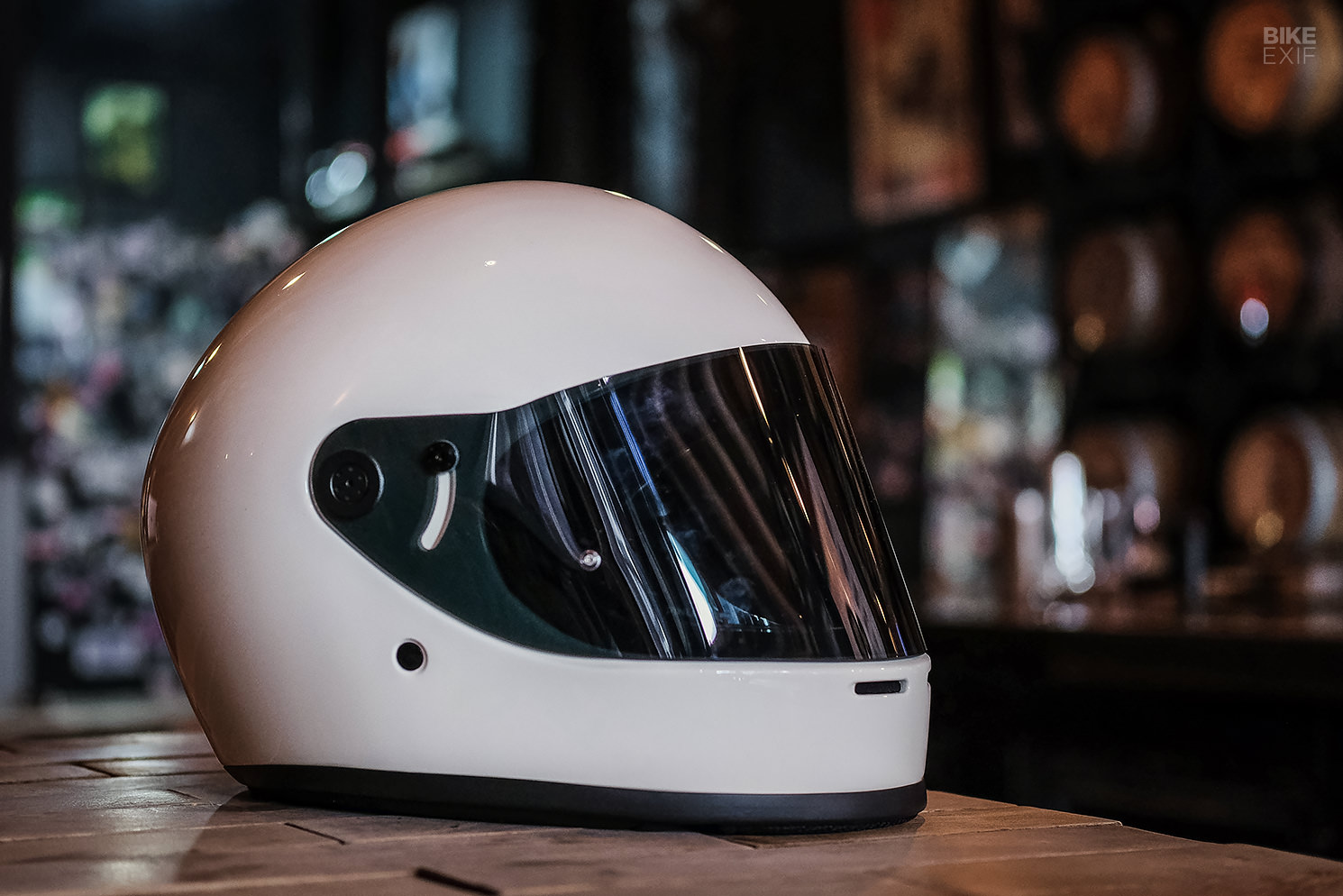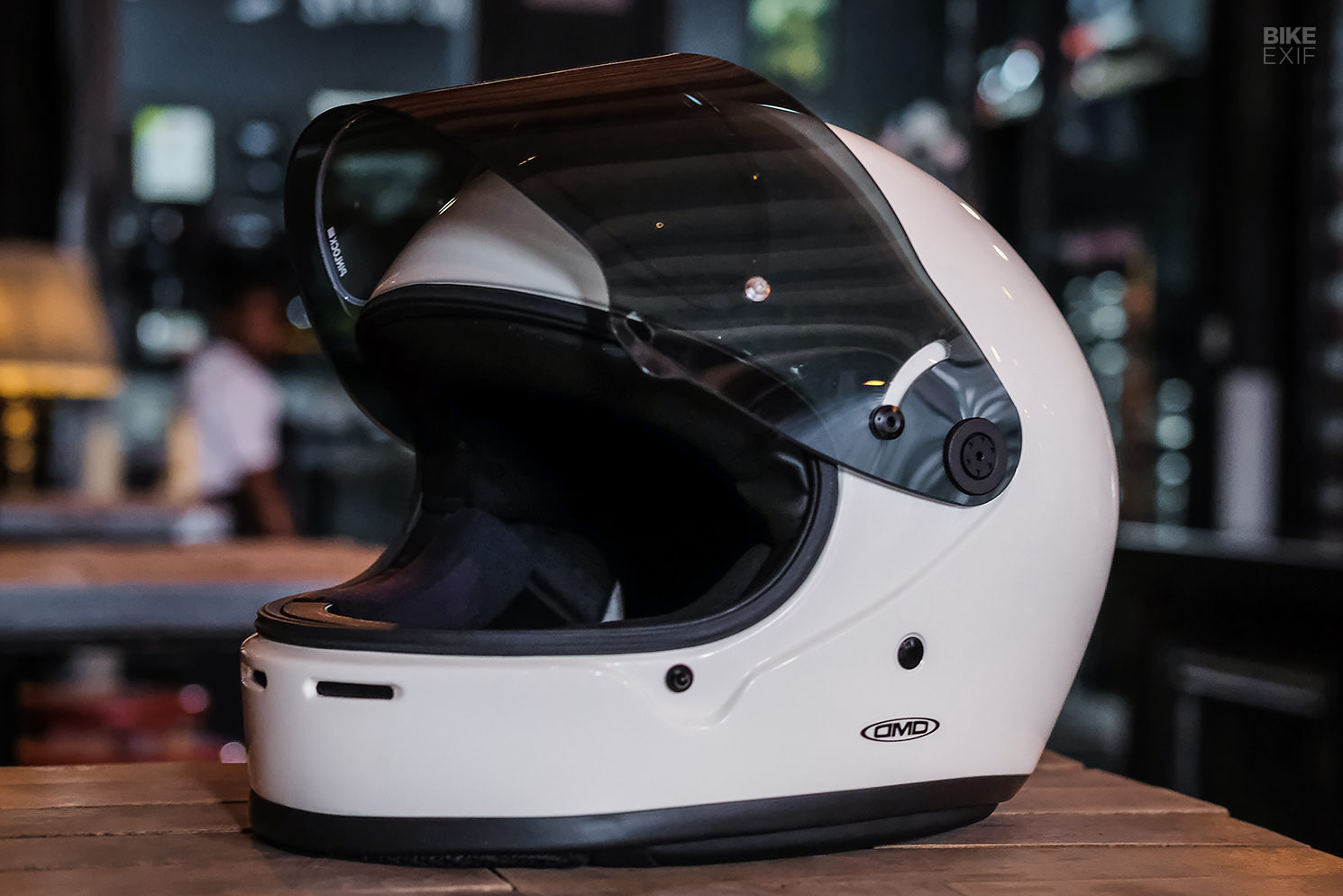Lane Splitter: A bratty little custom Suzuki 110 by K-Speed

Many people wouldn’t consider a small commuter bike a good donor for a custom project. They’re usually cheap, utilitarian and bland; hardly café racer fodder. But they’re also reliable and easy to work on, and they set the bar so low in stock form, that any changes can only improve them.
K-Speed in Thailand is well-versed in small bike customization. Even though they’ve worked on plenty of big bikes too, it’s their Honda Cub and Monkey customs that keep us coming back for more. It helps that custom work isn’t their core business; K-Speed is actually a massive importer and manufacturer of motorcycle parts.

To prove that the company can work its magic on just about anything, K-Speed boss, Eak, dragged a 2001-model Suzuki GD 110 into the workshop. The GD 110 is a small, unassuming 113 cc single that’s mostly available in Asian countries. It’s barely distinguishable from the scores of delivery bikes and commuters that it shares the road with—which is precisely why Eak picked it.
He wanted to prove that he and his team could convert a motorcycle with “delivery bike style” into a “baby brat.” And kudos to K-Speed, because they absolutely nailed the brief.

Straight out the gate it was clear that none of the Suzuki GD 110’s bodywork was going to make the cut. But it also shed its subframe, air box, wheels and all of its lighting. K-Speed built it back up with a mix of custom parts and items from their own catalog.
They didn’t mess with the engine though. A new carb and velocity stack went on, along with a new exhaust from K-Speed’s Diablo range of parts.

Next, K-Speed made some pretty drastic changes to the Suzuki’s stance. New rims were laced to the OEM drum brake hubs, and shod with vintage sawtooth treads from Vee Rubber. Measuring 4.00×17” in the front and 4.50×17” at the back, they add some visual heft to the skinny GD 110.
The bike’s been slammed as far as it’ll go too. K-Speed shortened the front forks and added rubber gaiters, then fitted a pair of chromed shocks out back.

Sitting up top is a fresh subframe. Shorter than before and finished off with a tidy rear loop, it cuts a much cleaner line than the stock setup. K-Speed also added a slim custom seat and an off-the-shelf taillight and license plate bracket, but little else; there’s no rear fender, and no visible components to clutter up the under-seat area.
Although the fuel tank looks like it’s from a vintage Suzuki, K-Speed actually fabricated it from scratch. The paint and graphics have a period-correct vibe to them, but for the matte black finish that matches the rest of the bike.

Like the tail end, there’s hardly anything going on in the cockpit. K-Speed added a set of custom bars, welded directly to the top yoke with no risers. They’re fitted with a new throttle, levers and grips… but that’s it.
There’s no speedo and no visible switches—not even a starter button (luckily the GD 110 still has a kickstart lever). Even the new LED headlight has been mounted close to the steering stem, to take up as little space as possible. There’s no front fender, and even the chain guard’s ended up in the bin.

Squat and pared back to almost less than the essentials, K-Speed’s Suzuki GD 110 is lesson in exploiting unexpected potential.
Is it practical? No. But do we love how unapologetically bratty it is in its minimalism? Absolutely.
K-Speed | Instagram | Images by Hipmotography

Continue reading...

Many people wouldn’t consider a small commuter bike a good donor for a custom project. They’re usually cheap, utilitarian and bland; hardly café racer fodder. But they’re also reliable and easy to work on, and they set the bar so low in stock form, that any changes can only improve them.
K-Speed in Thailand is well-versed in small bike customization. Even though they’ve worked on plenty of big bikes too, it’s their Honda Cub and Monkey customs that keep us coming back for more. It helps that custom work isn’t their core business; K-Speed is actually a massive importer and manufacturer of motorcycle parts.

To prove that the company can work its magic on just about anything, K-Speed boss, Eak, dragged a 2001-model Suzuki GD 110 into the workshop. The GD 110 is a small, unassuming 113 cc single that’s mostly available in Asian countries. It’s barely distinguishable from the scores of delivery bikes and commuters that it shares the road with—which is precisely why Eak picked it.
He wanted to prove that he and his team could convert a motorcycle with “delivery bike style” into a “baby brat.” And kudos to K-Speed, because they absolutely nailed the brief.

Straight out the gate it was clear that none of the Suzuki GD 110’s bodywork was going to make the cut. But it also shed its subframe, air box, wheels and all of its lighting. K-Speed built it back up with a mix of custom parts and items from their own catalog.
They didn’t mess with the engine though. A new carb and velocity stack went on, along with a new exhaust from K-Speed’s Diablo range of parts.

Next, K-Speed made some pretty drastic changes to the Suzuki’s stance. New rims were laced to the OEM drum brake hubs, and shod with vintage sawtooth treads from Vee Rubber. Measuring 4.00×17” in the front and 4.50×17” at the back, they add some visual heft to the skinny GD 110.
The bike’s been slammed as far as it’ll go too. K-Speed shortened the front forks and added rubber gaiters, then fitted a pair of chromed shocks out back.

Sitting up top is a fresh subframe. Shorter than before and finished off with a tidy rear loop, it cuts a much cleaner line than the stock setup. K-Speed also added a slim custom seat and an off-the-shelf taillight and license plate bracket, but little else; there’s no rear fender, and no visible components to clutter up the under-seat area.
Although the fuel tank looks like it’s from a vintage Suzuki, K-Speed actually fabricated it from scratch. The paint and graphics have a period-correct vibe to them, but for the matte black finish that matches the rest of the bike.

Like the tail end, there’s hardly anything going on in the cockpit. K-Speed added a set of custom bars, welded directly to the top yoke with no risers. They’re fitted with a new throttle, levers and grips… but that’s it.
There’s no speedo and no visible switches—not even a starter button (luckily the GD 110 still has a kickstart lever). Even the new LED headlight has been mounted close to the steering stem, to take up as little space as possible. There’s no front fender, and even the chain guard’s ended up in the bin.

Squat and pared back to almost less than the essentials, K-Speed’s Suzuki GD 110 is lesson in exploiting unexpected potential.
Is it practical? No. But do we love how unapologetically bratty it is in its minimalism? Absolutely.
K-Speed | Instagram | Images by Hipmotography

Continue reading...







































































































